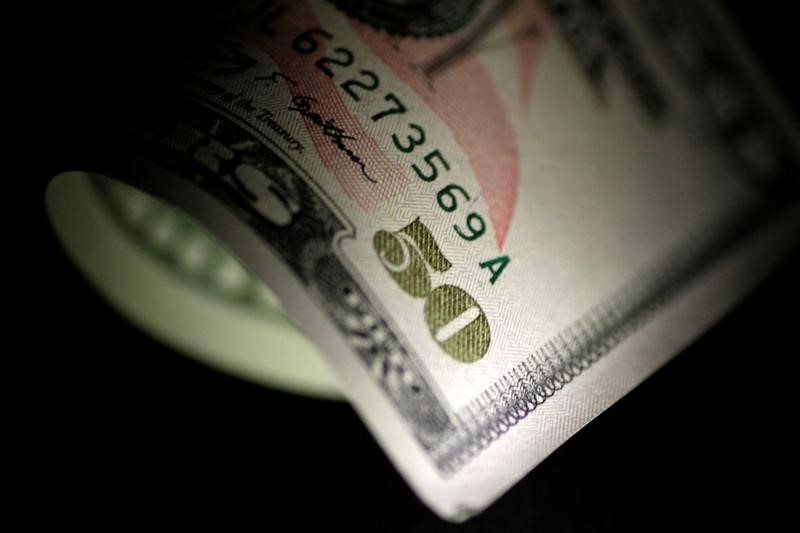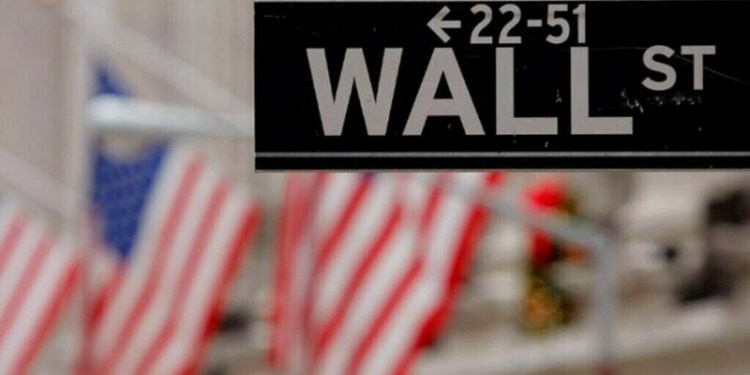 © Reuters. FILE PHOTO: Illustration photo of a U.S. Dollar note
© Reuters. FILE PHOTO: Illustration photo of a U.S. Dollar noteBy Lewis Krauskopf
NEW YORK (Reuters) – The march higher in bond yields reached a critical level on Tuesday that could prompt portfolio managers to weigh moving money into safer fixed-income securities at the expense of riskier assets like stocks and emerging markets.
The yield on 10-year U.S. Treasuries (), a global benchmark for interest rates on everything from home loans to corporate bonds, hit 3 percent for the first time in more than four years. The move above the closely watched threshold comes as bond investors grow more wary of signals that inflation is picking up and the U.S. Federal Reserve is in no mood to put the brakes on its own rate-hiking program.
Rising interest rates pose several problems for stocks in particular.
Higher borrowing costs threaten to eat into the robust profit growth that has underpinned a nine-year bull market during which the S&P 500 has delivered a total return, including reinvested dividends, of 367 percent.
But just as importantly, higher bond yields offer a safer alternative for generating income, something largely lacking through years of rock-bottom rates after the financial crisis. Stocks are no longer the only game in town.
“The increase that we’ve seen in bonds recently has definitely made bonds more attractive than some of the stocks out there, especially with stocks continuing to struggle,” said Mary Ann Hurley, vice president in fixed income at D.A. Davidson in Seattle. “I think these higher yield points on the 10-year and longer will be bringing in some real money to put away at levels that we haven’t seen in a long time.”
‘A BIG LEVEL’
The 10-year yield has climbed steadily since ending 2017 at 2.41 percent. Its breach of the 3 percent level helped focus investors on rising risks for equities, providing a catalyst for a shakeup in stocks that drove the S&P 500 () back into negative territory for the year, down 1.4 percent.
“It’s a big level in the global marketplace, it’s a big psychological level,” said Justin Lederer, interest rate strategist with Cantor Fitzgerald in New York.
Moreover, it’s a threat to riskier assets beyond just U.S. stocks.
Investment-grade and high-yield corporate bonds are also now negative on the year, and the rise in Treasury yields appeared to be rippling through emerging markets, as investors eye shifting money into safer U.S. debt. Benchmark measures of emerging market stocks and bonds from MSCI () and JPMorgan (NYSE:) <.jpmepr>, respectively, both closed at two-month lows.
“At least in the currency world, rising yields in the U.S. severely undermine the appeal of riskier assets, particularly higher-yielding and emerging market currencies,” said Omer Esiner, chief market analyst at Commonwealth Foreign Exchange in Washington.
REAL YIELDS STILL LACKING
Not all investors were ready to seize on the 10-year’s move as the spark to shift money around, especially in the midst of a corporate earnings season that is on track to be the strongest period in more than seven years.
“I don’t think that the 3 percent level necessarily makes bonds a buy,” said Alan Gayle, president of Via Nova Investment Management in Fredericksburg, Virginia. “I don’t think investors should be abandoning stocks when the economy is growing and earnings are up roughly 20 percent from a year ago.”
Given their expected returns, stocks continue to look relatively attractive, said Jason Ware, chief investment officer at Albion Financial Group in Salt Lake City. That is particularly the case when you look at what Treasuries yield after inflation, their so-called “real yields.”
“I still don’t think there’s much competition from an asset allocation decision perspective,” Ware said. “We’re talking about a 3 percent, 10-year — after inflation a 1 percent yield.”
Both bond and stock funds have drawn interest from investors this year.
So far in 2018, about $67 billion on a net basis has flowed into all equity mutual and exchange traded funds, bringing the total in such funds to $12.3 trillion, according to Lipper data.
Taxable bond mutual funds and ETFs have drawn $68 billion in net inflows this year, bringing the total in those funds to $4.9 trillion, according to Lipper.
Some investors were shrugging off the 10-year’s milestone, preferring to watch the path of rates from here.
“I don’t think there’s anything magical about 3 percent,” said Willie Delwiche, an investment strategist at Baird in Milwaukee. “If rates rise quickly from here, I think that’s a headwind for stocks and for the economy. But if we have a slow drift higher, I don’t see any reason why it has to be a headwind.”
Source: Investing.com


























